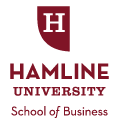Intended Date of Award
2021
Degree Name
Doctorate in Public Administration (DPA)
Chair
Kris Norman-Major, PhD
Vice-Chair
Craig Waldron, DPA
Committee Member
Larry Weinberg
Abstract
Abstract
The public Administrator’s Role in Public Art Collaborations:
A Case Study of Public Art in Minnesota Communities
By Kurtis G. Ulrich
Hamline University 2021
This study focuses on the planning and implementation of public art in small cities, and the public administrator’s role in public art collaborations within that context. The research highlights the public administrator’s role in public art collaborations and analyzes how public art projects are implemented and sustained in small cities. The study methodology relies on the qualitative case study method to describe the subjective real-world experiences of city managers in public art collaborations within three Minnesota cities. The researcher interviewed public administrators, local officials, and other stakeholders involved with public art in each of the three communities. Communities were selected based upon having a self-reported public art presence within the community, and chosen to represent three different and distinct geographic situations (i.e., first-ring suburb, exurban community, and free-standing regional center). Study findings indicate that the public administrator’s role in managing cross-sector collaborations can contribute to a successful public art project. The public administrator’s role is examined in regard to classic management roles and the study outlines the multiple roles played by the public administrator concerning public art. The city manager, and administrative staff, often play a pivotal role between the art commissioning group, the city council, and the public. All three subject communities had developed public art policies and had incorporated public art into the strategic vision for the community. The city manager was found to have a key role in taking the high level public art policy direction from the city council and implementing those policies on a day-to-day basis. The research showed that an inclusive upfront collaborative process can build a common expectation among elected officials, the artists, and the public about the value of art in the community and its positive role in shaping the community. The role of the city manager was found to be instrumental in developing and implementing city policy in regard to the public art process. The city manager, along with elected officials play a substantial role in building and maintaining relationships among the various art collaborators, including artists, art commissions, school districts, civic groups, and the like. The city manager holds a leadership position in the city, and serves as a liaison to sustain relationships across the community. In all cases, city managers were responsible for identifying funding and allocating resources that supported public art. The study provides a resource for citizens, elected officials, and public administrators that may have an interest in pursuing public art projects in their community.
Recommended Citation
Ulrich, Kurtis, "The Public Administrator’s Role in Public Art Collaborations: A Case Study of Public Art in Minnesota Communities" (2021). School of Business Student Theses and Dissertations. 24.
https://digitalcommons.hamline.edu/hsb_all/24
dc_type
text
dc_publisher
DigitalCommons@Hamline
dc_format
application/pdf
dc_source
School of Business Student Theses and Dissertations
Included in
Art Practice Commons, Other Political Science Commons, Other Public Affairs, Public Policy and Public Administration Commons, Public Administration Commons, Public Policy Commons, Sculpture Commons, Urban, Community and Regional Planning Commons

